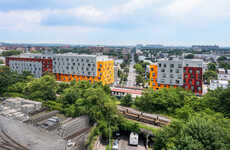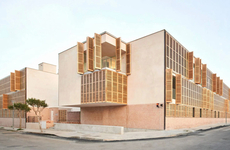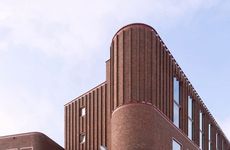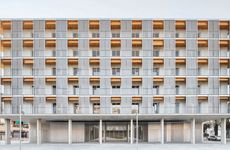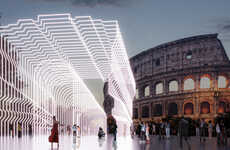
Studioninedots Designed Stepped Buildings in Amsterdam,
Kalin Ned — January 15, 2023 — Art & Design
References: studioninedots.nl & dezeen
In the Overhoeks neighborhood in Amsterdam, a slew of low-rise housing blocks and towers occupy a new development—some of them are waterfront social housing units. The De Jakoba project was designed by local practice Studioninedots. There are a total of 135 apartments in the building, which has a stepped design. The architecture studio designed the structure wider at the base and gradually narrower at the top. This means that "each of the 135 apartments has a slightly unique layout and size." The units also have their very own balcony which is an important feature for waterfront social housing. Prefabricated materials were used for the building to cut costs and expedite construction times.
Through the design of the De Jakoba project, Studioninedots wanted "to create a sense of arrival" for residents.
Image Credit: Peter Tijhuis
Through the design of the De Jakoba project, Studioninedots wanted "to create a sense of arrival" for residents.
Image Credit: Peter Tijhuis
Trend Themes
1. Stepped Building Design - The stepped design of buildings provides unique layouts and sizes for residential units, which could be applied to create distinctive commercial or office spaces.
2. Waterfront Social Housing - Developing waterfront social housing provides a unique opportunity to provide affordable housing options with specific features in urban areas.
3. Prefabricated Materials - The use of prefabricated materials could enable faster, more cost-efficient construction of buildings in various industries, such as hospitality or healthcare.
Industry Implications
1. Residential Real Estate - Stepped building designs and waterfront social housing could disrupt the residential real estate industry by creating more affordable and unique living spaces.
2. Commercial Real Estate - Stepped building designs could be applied to create distinctive office spaces, potentially disrupting the commercial real estate industry.
3. Construction - The use of prefabricated materials could disrupt the construction industry by enabling faster construction times and cost-efficient building methods.
2.9
Score
Popularity
Activity
Freshness



